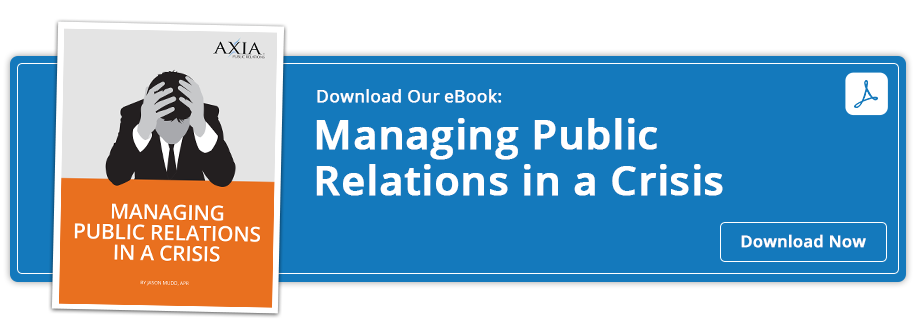Dark Sites: Do we need them in this day of viral video and immediate social connection?
By Wendy Bulawa AgudeloDecember 9, 2015
 Not long ago, the Axia team blogged about dark sites – what they are and why they exist. But some may question their value in this age of rapid-fire, immediate communication. Now we take an in-depth look at dark sites and why we need them.
Not long ago, the Axia team blogged about dark sites – what they are and why they exist. But some may question their value in this age of rapid-fire, immediate communication. Now we take an in-depth look at dark sites and why we need them.
Available since the dawn of the Internet, dark sites are optimized, informative web pages that temporarily reside in the deep web of the Internet. Given limitless coding options, the Internet has layers like an onion. The most widely used and understood, the surface web, is comprised of content crawled by search engines such as Google or Yahoo. However, additional layers exist that are not accessible via search engines and require special access. An example of the deep web would include online documents shared with co-workers or staff that telecommutes.
There is nothing illicit about the deep web. But lesser-known and more dangerous layers of the Internet do exist, and within those layers – referred to as the dark web – are where criminal and illicit activities can occur. The dark web can be accessed using anonymity software that makes users basically untraceable. This network of hidden sites can be dangerous. For example, the Ashley Madison hackers used the dark web to obtain confidential personal information from Ashley Madison’s users.
Knowledge of the different layers of the Internet – surface, deep and dark – helps clarify the benefits of dark sites. When crises occur, companies may choose to replace standard business operations with crisis communication. Therefore, dark sites are useful for businesses that want to avoid sidelining regular business operations during a crisis. In addition, dark sites provide the following benefits:
1. Comprehensive information. Social media is immediate and far-reaching. However, comprehensive information is rarely plausible given social media’s brief, skim-style methods. Businesses should consider maintaining dark sites to ensure that a comprehensive overview of information is made readily available for all audiences. Websites remain the go-to resource for information. Should that information be as up-to-date and accurate as social media banter, it will serve profoundly more useful. The types of information placed on dark sites include: company statements, instructions on how to proceed during a crisis, FAQs, contact information and methods for obtaining regular updates about the situation.
2. Limits engagement. Social media is just that: social. Businesses amid crises often find themselves either (a) not responding (due to legal issues or lack of information) or (b) responding piecemeal to all audiences (not recommended). By employing a dark site containing FAQs, customer hotlines, etc., businesses divert attention to proper channels, and the social media manager isn’t placed in a position to answer questions on the fly.
3. Continuous updates. Attempting to seed up-to-the-minute updates across every digital property can be arduous. Therefore, dark sites can become the core for a continuous stream of updates. What’s more, by applying proper keywords, cross-links, RSS feed, emails and even interconnected social media strategies, businesses can more broadly and readily reach a multitude of demographics in just a few clicks.
When a crisis hits, businesses need immediate ways to communicate far and wide with various publics (partners, vendors, consumers, media). To do so, many use dark sites to provide all the details and updates to ensure that consistent and detailed information is available – not conjectures or rumors. Axia Public Relations understands that in an era of rapid-turn communication, businesses need tools in place to ensure seamless operation – even amid crises. Download Axia PR’s guide to crisis management to learn more about how to contend with these unexpected moments.
 Wendy Bulawa Agudelo has more than 15 years of experience in technology, business, consumer and non-profit public relations. She regularly pens feature articles on parenting topics for Bay State Parent Magazine, serves on the Massachusetts Down Syndrome Congress PR Task Force, is a culinary enthusiast and champion for the special needs community.
Wendy Bulawa Agudelo has more than 15 years of experience in technology, business, consumer and non-profit public relations. She regularly pens feature articles on parenting topics for Bay State Parent Magazine, serves on the Massachusetts Down Syndrome Congress PR Task Force, is a culinary enthusiast and champion for the special needs community.
Featured image credit: 123rf.com
Topics: public relations, crisis communications, shared media



Comment on This Article